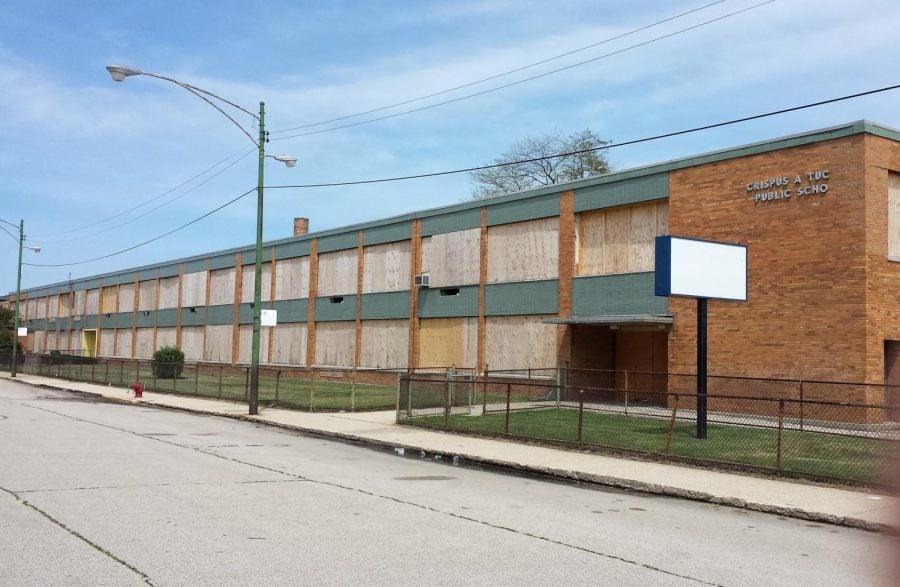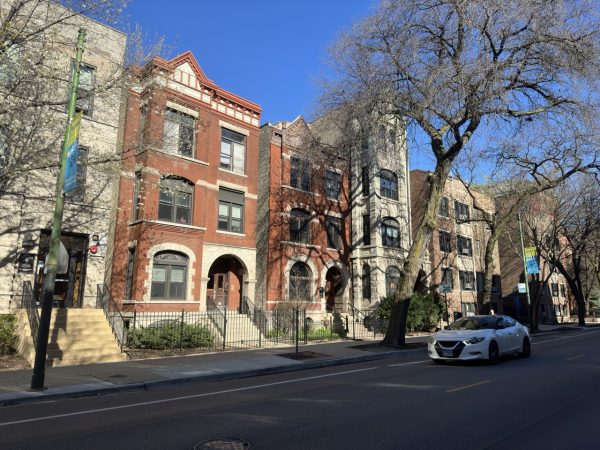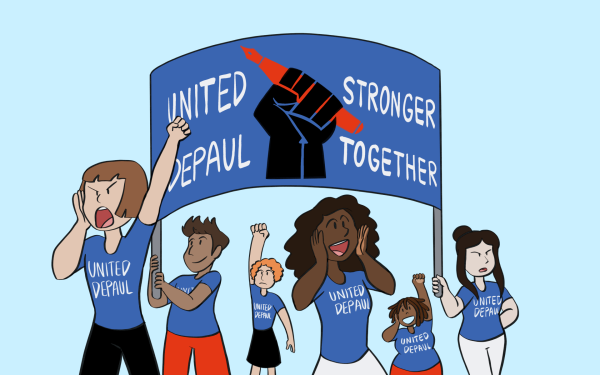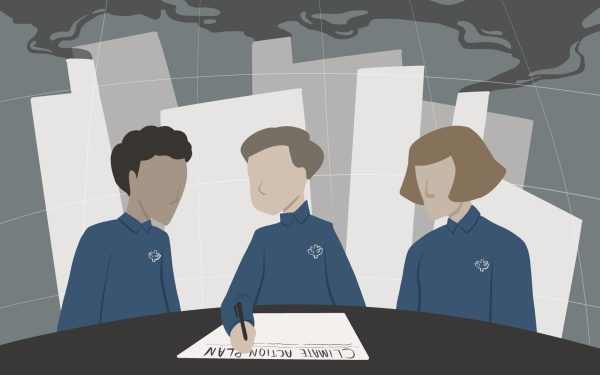CPS showing academic improvements, but schools are still closing
The shuttered Crispus Attucks Public School in the Bronzeville neighborhood was closed in 2008 and has remained empty ever since. (Photo courtesy of steven kevil | wikimedia commons)
Once deemed the worst in the nation, Chicago Public Schools now lead America’s public schools in terms of academic growth.
In 1987, Former U.S. Secretary of Education William J. Bennett said, “I’m not sure there’s a system as bad as the Chicago system.”
Thirty years later, a Stanford study published in November 2017 found that from 2009 to 2014, CPS led the country in academic growth.
A 1987 finding that half of Chicago’s 64 public high schools ranked in the nation’s bottom 1 percent in terms of Academic College Test scores, prompted Bennett to advise parents to send their children to private and charter schools.
The Stanford Study measured the progress of groups of students from third through eighth grade using their Illinois Standard Achievement Test results and National Assessment of Educational Progress reports.
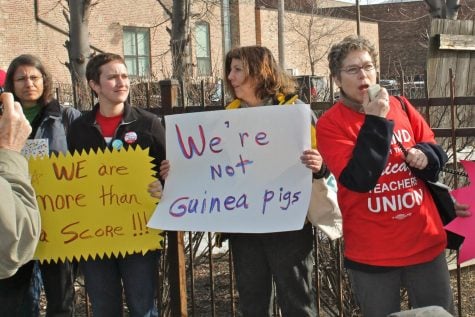
(Photo courtesy of bob simpson | flickr)
Both now show CPS improving at a greater rate than school systems in the rest of the country.
But Efrain Torres, a 21-year-old former CPS student and current DePaul employee at the Ray Meyer Fitness Center, is not convinced.
“High school is a different story,” Torres said. “People are older, wilder and don’t care because we start to think high school is all fights and gang activity. Learning is very minimal.”
Torres grew up on the South Side of Chicago and attended CPS from 1990 to 2005.
“I think help has to come from within. If you do not want to help yourself, no one can ever help you,” Torres said.
Chicago Mayor Rahm Emanuel made improving Chicago’s education a priority when he was elected in 2011, and in 2012 he wrote an opinion piece for the Chicago Tribune where he explained the importance of reforming the system.
Emanuel subsequently enacted policies such as cancelling teacher pay raises, lengthening school days and enforcing merit-based pay corresponding to test scores.
Throughout his tenure, graduation rates have increased from 56.9 percent in 2011 to 77.5 percent in 2017, with dropout rates falling from 39.8 percent to 18.6 percent during the same time span.
Chicago blacks and Hispanics, who make up a majority of South and West Side schools, have followed these trends.
Dr. Kathryn Grant, a professor of clinical psychology at DePaul, began the Cities Project in 2008 – a self-sufficient project focused on mentoring South Side students from fourth grade through their first year of college.
The project brings DePaul students down to South Side schools such as Joplin and Wentworth, where they play and tutor the kids while also helping to teach them coping mechanisms for stressors.
Cities Project co-directors of communication, Monica Rauch and Emily Patton, say the aim of the project is to get kids to college.
“As it grows, we would like to get all the kids in low-economic standing into the program,” said Patton.
Similar programs exist as well such as Jumpstart, a national literacy program for preschoolers that helps to prepare them for kindergarten. Elizabeth Carrillo, a DePaul student who volunteers with Jumpstart, says the program focuses on under-resourced communities to help with fundamentals like vocabulary, letters and names.”
“We don’t go into a school looking to fix everything. We’re not the answer, we’re just trying to help each other out,” said Carrillo.
Despite improving academic scores, increased graduation rates and decreased dropout rates, Chicago Public Schools continue to lose enrollment.
School closings, the departure of families from Chicago and the rise of charter schools have all contributed to the drop.
In 2013, Chicago closed 50 public schools, the largest mass closing in Chicago history. Following the end of a five-year moratorium, in which no schools would be closed, Chicago introduced a plan to phase out four schools over a period of three years. Phasing out the schools gradually rather than immediate closings in June, as was originally proposed, allows students to finish their enrollment.
As public schools continue to close and lose enrollment, charter schools get built in their place, with Chicago now home to 128 of the publicly-funded private institutions.
Regular CPS attendance dropped to 316,000 this year from a 2002 peak of 428,000, while charter school attendance rose to 55,000 this year from 10,000 in 2002.
“In theory they’re good, but charter schools have a certain student in mind, and education is more than standardized tests,” said Eleora Lebre, volunteer coordinator for the Jumpstart program.
“Instead of working to fix the whole, people are trying to create their own solutions,” said Lebre.
Charter schools are publicly funded but emphasize academic success and are not restricted by the same measures as traditional schools. Criticisms of charter schools include the fact that they do not necessarily produce more graduates, and they see a greater percentage of students transferring out than traditional schools.
A University of Chicago study on charter schools published in November 2017 supported these claims, showing those schools had a one percent lower graduation rate. The study found that charter students were more than twice as likely as traditional students to transfer out by their second year of high school.
John Zeigler, director of the Egan Office of Urban Education and Community Partnerships at DePaul University, is not a proponent of privatizing primary education.
“(Charter schools) have defamed what it means to be a community school,” said Zeigler. “I would not send my child to a business model.”
Zeigler says rebuilding communities is as important for developing kids as schools themselves.
“Schools can’t operate without a sense of community and that includes, healthcare, housing and jobs,” said Zeigler.
On Tuesday, April 10, as part of a public conversation series at the Jane Addams Hull-House Museum on CPS closings and the lifting of the moratorium this past December, a panel discussed the significance of the past closings and the possibility of future ones.
Beatriz Ponce de Leon, one of the panelists and executive director of Generation All, a citywide initiative to improve neighborhood schools and communities, shared Zeigler’s sentiments.
“School improvement and community improvement go hand-in-hand,” said Leon. “And it’s hard to look at what a school needs to do to succeed when the guidelines change every year.”
While the Englewood schools will not be closed immediately, the moderator of the panel, Kalyn Belsha, a reporter for The Chicago Reporter, said, “We expect there could be many more (closings).”


